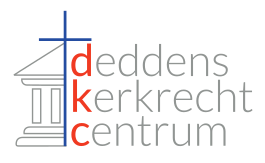As society progresses, the integration of new innovations into various fields has become increasingly notable. The integration of advanced methodologies and devices has significantly transformed practices, enhancing performance and precision. Many industries now rely on sophisticated systems that streamline processes, ensuring tasks are completed with higher accuracy and reduced effort.
In this context, the phrase “technology in service” highlights how contemporary advancements support professionals in executing their responsibilities more effectively. Various sectors, including energy distribution and maintenance, have adopted cutting-edge solutions that not only improve quality but also increase safety for workers and clients alike.
From smart diagnostics to automated workflows, the advancements being introduced continuously reshape how tasks are completed. With these innovative resources at their disposal, individuals can optimize their performances and achieve remarkable results in their respective fields. This exploration will reveal how embracing these advancements enhances service delivery and operational success.
Advanced Circuit Testing Devices for Accurate Diagnostics
The integration of cutting-edge circuit testing devices has significantly elevated diagnostic precision within the industry. These advanced instruments help technicians identify issues swiftly, minimizing downtime and enhancing system reliability.
Among the latest innovations are digital multimeters equipped with Bluetooth connectivity, allowing for seamless data transfer and remote monitoring of measurements. Such technology in service not only facilitates real-time analysis but also supports a dust-free installation environment, ensuring sensitive circuits are protected from contamination.
With an emphasis on accuracy, devices such as network analyzers provide comprehensive feedback about electrical parameters, allowing technicians to assess both passive and active components effectively. These innovations provide a methodological approach for troubleshooting, reducing the likelihood of misdiagnosis.
The emergence of handheld thermal cameras also adds a new dimension to circuit diagnostics. By detecting hotspots, these devices can highlight areas of inefficiency or potential failure, ensuring proactive maintenance steps can be taken.
In conclusion, the advent of advanced circuit testing devices is transforming diagnostic practices, enabling professionals to deliver results with unprecedented accuracy and efficiency. The future promises further advancements, solidifying the importance of innovation in pursuit of reliability and safety in circuit management.
Smart Wiring Solutions for Enhanced Safety and Control
In the age of rapid advancements, smart wiring solutions have emerged, integrating technology in service to provide unmatched safety and control in various applications. These systems utilize real-time monitoring capabilities and automation, ensuring that electrical networks are not only efficient but also secure.
One of the innovative aspects of smart wiring is its ability to facilitate dust-free installation. This is achieved through meticulous design and planning, minimizing disruption and promoting a clean working environment. Such attention to detail not only enhances safety but also increases the longevity of the wiring systems.
The innovations in this area include:
- Smart Circuit Breakers: Automatically detect faults and offer remote control, allowing for immediate action to prevent hazards.
- Home Automation Systems: Allow homeowners to control lighting, heating, and appliances through smartphones or voice commands, increasing convenience and energy savings.
- Wireless Monitoring Sensors: Enable constant oversight of electrical performance, alerting users to potential issues before they escalate.
Using these cutting-edge solutions not only enhances safety but also delivers greater control over electrical systems. As residential and commercial spaces continue to evolve, the importance of advanced wiring technologies cannot be overstated. For those interested in exploring innovative wiring solutions, more information can be found at https://brightelectricla.com/.
Utilization of Drones for Inspection and Maintenance
Drones are becoming a fundamental innovation in the realm of inspection and maintenance tasks, particularly for high-voltage installations and large infrastructure. Equipped with advanced imaging technology, these flying devices capture high-resolution images, enabling technicians to assess conditions without the need for scaffolding or ladders. This capability significantly reduces the risks associated with manual inspections, ensuring safer operations.
The integration of drones facilitates dust-free installation processes, maintaining cleanliness around sensitive equipment. By employing these aerial robots, organizations can execute routine checks with minimal disruption to ongoing service. This not only enhances operational efficiency but also preserves the integrity of surrounding environments.
With the ability to gather and transmit data in real-time, drones empower professionals to make informed decisions swiftly. The adoption of this technology in service minimizes downtime, allowing for timely interventions based on precise diagnostics. The convergence of drone capabilities with data analytics presents an exciting frontier for predictive maintenance strategies in various sectors.
As industries continue to pursue innovation, the application of drones for inspection tasks reflects a shift towards smarter, safer, and more efficient practices. This evolution redefines traditional methods and paves the way for enhanced monitoring solutions, reinforcing the potential of aerial technology in the field.
Software Solutions for Project Planning and Electrical Design
In the field of electrical design, innovative software solutions have become indispensable for enhancing project planning and execution. These applications streamline the entire workflow, enabling professionals to visualize complex systems and manage resources effectively.
One significant advancement is the utilization of Building Information Modeling (BIM) software, which allows engineers to create detailed 3D models of electrical systems. This advanced equipment minimizes errors during installation, ensuring a dust-free environment and promoting safety on-site.
Additionally, simulation software plays a crucial role in testing designs before physical implementation. By predicting how systems will behave under various conditions, professionals can proactively address potential issues, resulting in more reliable and efficient installations.
Project management applications facilitate collaboration among team members, providing real-time updates on progress, budget tracking, and resource allocation. This innovation not only enhances communication but also contributes to timely project completion.
Integrations with cloud-based platforms allow for better storage and access to project documents, ensuring that stakeholders have the most up-to-date information. Such systems are fundamental for maintaining organization and clarity throughout the design phase.
Overall, the adoption of these advanced software solutions significantly enhances productivity in electrical design and planning, paving the way for more innovative and successful projects.
